Do you want to start a marketing blog, but don’t know where to begin?
In this post, we’ll walk you through the steps of starting a marketing blog from scratch.
We’ll show you how to choose a domain name and hosting provider and install WordPress. Plus, we’ll provide tips to create content, grow your audience, and make money from your blog.
So what are you waiting for?
Let’s get started!

How to Start a Marketing Blog in 7 Steps
- Define Your Marketing Blogging Goals
- Choose a Marketing Niche
- Pick & Register a Blog Domain Name
- Setup WordPress
- Write & Publish Blog Posts
- Promote Your Marketing Blog
- Monetize & Make Money
1. Define Your Marketing Blogging Goals
Before you start a marketing blog, it’s important to have a clear understanding of your goals.
Think about why you’re starting a blog in the first place.
Are you looking to build an audience, establish thought leadership or generate leads and sales?
Do you want to make money selling info products, offering services, or by generating leads?
Your answer will help determine what topics you write about, how often you publish new content, and how you promote your blog posts.
What is a Marketing Blog?
A marketing blog is a blog or website that shares marketing tips, insights, ideas, and advice on topics that can include SEO, social media, content marketing, email marketing, lead generation, and more. Marketing blogs help readers make smarter decisions when it comes to their marketing efforts.
Why Start a Marketing Blog?
There are many benefits to starting a marketing blog.
A marketing blog can help you:
- Become a thought leader in your industry
- Generate leads and sales for your business
- Build an audience around your brand
- Get press and media coverage
- Drive traffic to your website
Once your blog has grown and is established, your marketing blog will help you generate a full-time income passively.
How much money can you make from marketing blogging?
You can make $15-$25 for every 1000 ad views on your marketing blog. SEO-optimized blog posts can get anywhere between 300 to 1000 visits per month. So, a marketing blog with 100 blog posts can make as high as $2500 every month. You can make even more money if you monetize with affiliate marketing and digital products.
2. Choose a Marketing Niche
Now that you know why you’re starting a marketing blog, it’s time to choose your niche.
Your niche is the focus of your blog. It’s the specific blog topic or industry that you’ll be writing about.
For example, if you’re a digital marketing agency, your niche could be “small business digital marketing”.
If you’re an SEO consultant, your niche could be “SEO for ecommerce”.
Why choose a niche?
When you narrow your focus to a specific niche, you can become the go-to resource for that topic. It increases the chances of starting a successful blog.
You’ll be able to build a more engaged audience because people will know what to expect from your blog.
It will also be easier to stand out from the competition and be seen as an authority in your industry.
And when you’re seen as an authority, it becomes easier to monetize your blog.
Finding Your Ideal Niche
The best way to find your ideal niche is to start by brainstorming a list of potential topics that you could write about.
Here are some tips:
- Look at your existing skills and knowledge. What could you share with others?
- Consider your hobbies and interests. Is there a topic that you’re passionate about?
- Think about the problems that you can solve. What type of advice could you give to others?
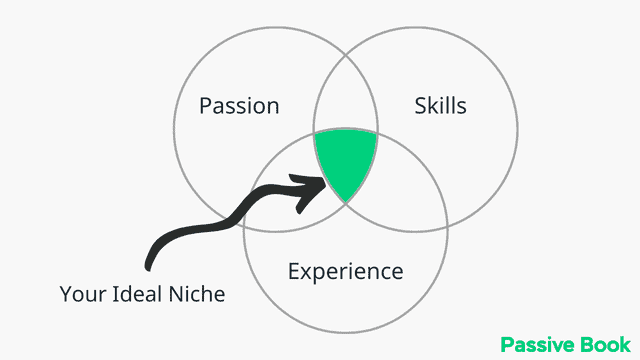
Once you have a list of potential niches, it’s time to do some research.
Here are a few marketing niches to help you find yours:
- SEO
- Social Media
- Blogging & Content Marketing
- Email Marketing
- Lead Generation
- Conversion Rate Optimization
- Small Business Marketing
- Copywriting
Your marketing blog niche will determine the type of blog you start so take some time to choose your niche wisely.
Examples of Marketing Blogs
Sometimes looking at other marketing blogs will help inspire ideas of your own. Here are some of the more popular examples of marketing blogs:
[auto-list-number] HubSpot
Hubspot is a leading inbound marketing and sales platform. In addition to their blog, they offer a wide variety of resources, including eBooks, webinars, and courses.

[auto-list-number] The Moz Blog
The Moz Blog is a great resource for all things digital marketing. From SEO tips and tricks to social media and content marketing, they have something for everyone.

[auto-list-number] Social Media Examiner
Social Media Examiner is a great resource for social media marketers. They offer tips, tricks, and tutorials for everything from Facebook to Twitter to LinkedIn.
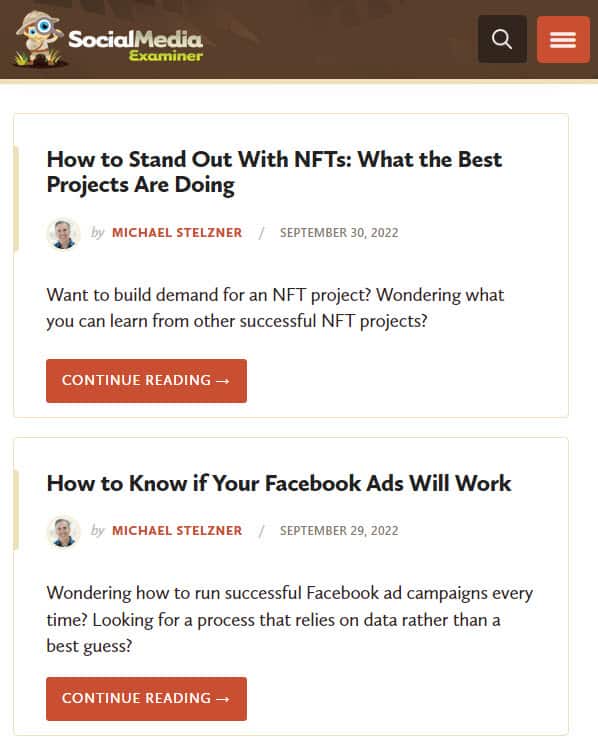
[auto-list-number] Content Marketing Institute
The Content Marketing Institute is the leading resource for content marketing information.

[auto-list-number] Copyblogger
Copyblogger is a great resource for copywriters and content marketers.

3. Pick & Register a Blog Domain Name
Once you have chosen your niche, it is time to brainstorm a few names for your marketing blog.
We recommend you keep your marketing blog’s name to two words (Example: Copy Blogger). One of the two words should be a keyword from your niche. The other word can be something that makes your website brandable. For example, our blog teaches people how to make passive income, so we have named it Passive Book.
Here are some of the words that you can mix and match into your blog name:
- SEO
- Social
- Blogging
- Content
- Marketing
- Backlinks
Use a Business Name Generator to brainstorm the name of your blog.
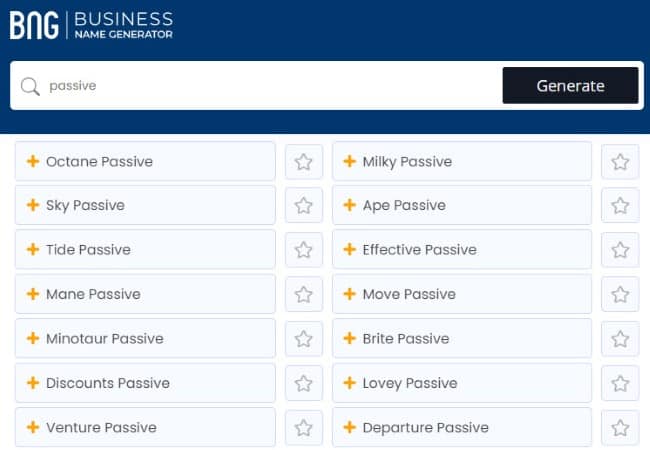
You can also use your own name for your blog. But if you ever plan to sell your website in the future, it is much more difficult to transfer your brand to the buyer when it is your name.
Check Domain Name Availability
After you have brainstormed a few names for your marketing blog, you should check if the .com domain name is available.
A domain name is the web address that people type into their browsers to visit your marketing blog. It is usually your marketing blog’s name followed by .com. For example, the domain name of this website is passivebook.com.
You must check if both the .com domain name and the social media handles are available. You can use Namechk to check the availability of both your domain name and social media handles.
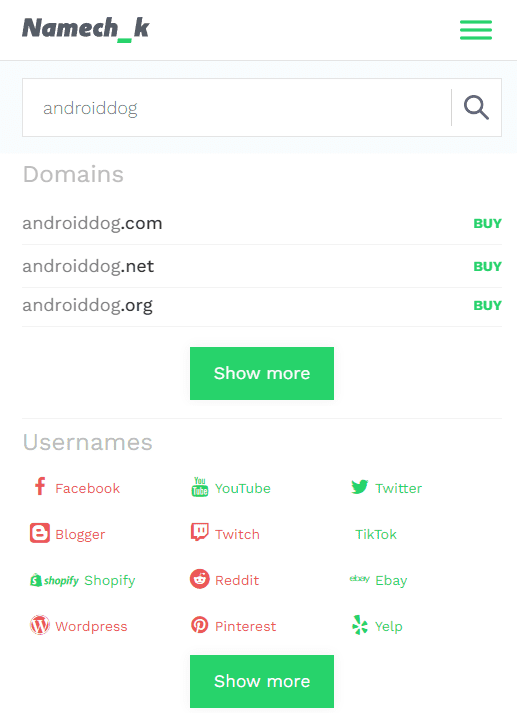
Here are a few things to keep in mind when selecting a domain name:
- Choose a .com domain name. 86% of the internet uses .com, so your visitors are likely to try visiting your blog by typing .com. Avoid other extensions like .net or .org.
- Don’t include hyphens and numbers.
- Do not use words with multiple spellings (for example colour vs color).
- Shorter domain names are better. Try to keep it under 12 characters.
- Spelling & Pronunciation should be easy and intuitive.
- It should be easy to remember.
- Avoid words that can be misread together. For example, therapistjohn.com can be read as Therapist John or The Rapist John.
- Make sure it’s not trademarked or copyrighted by someone else. The AI writing software Jarvis.ai had to rebrand to Jasper.ai because Marvel sued them for the Iron Man reference. Lawsuits will happen once your blog is established.
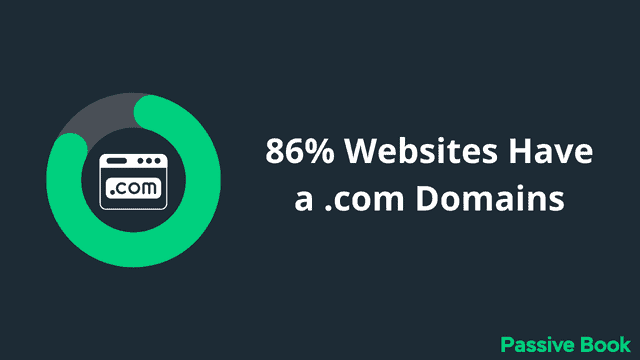
Register a Domain Name
Once you decide your domain name it is time to register it.
You should register your domain with NameCheap because you will get domain privacy for free. Other providers charge $12 per year for domain privacy. Without domain privacy, your name, home & email address will be accessible to the public.
Step 1: Go to NameCheap. Enter your domain name with the .com extension.
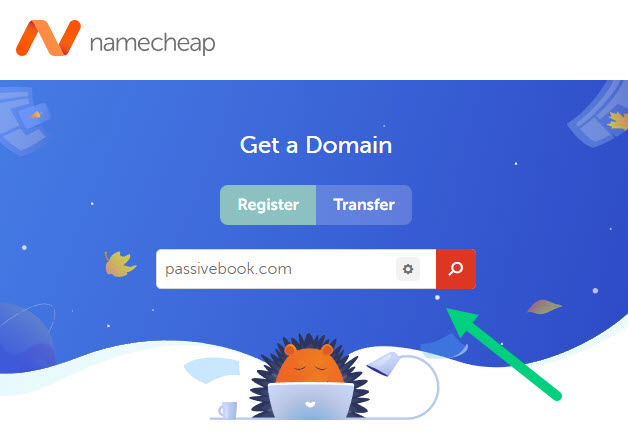
Step 2: Select the .com extension and click the Add to Cart button.
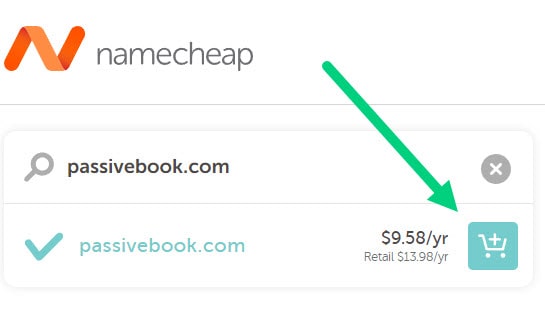
Step 3: After adding the domain to the cart, click on the Checkout button.
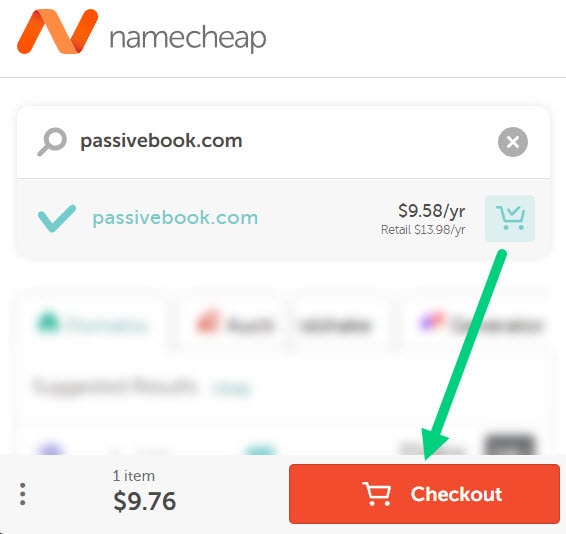
Step 4: Enable Domain Privacy that comes for free along with auto-renew. You don’t need any other paid addon.
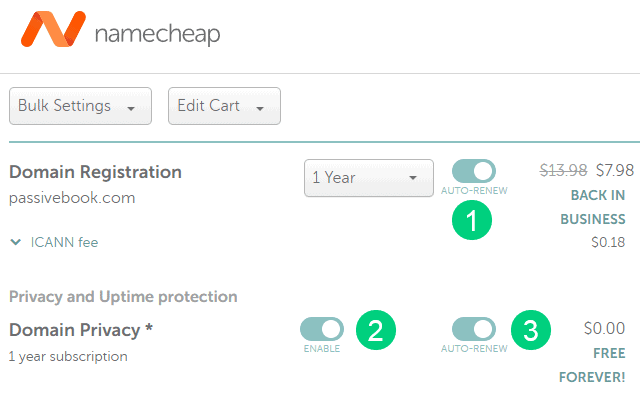
Step 5: Click on Confirm Order. Pay to complete your purchase.

Step 6: Log in to Namecheap and click on Domain List ❶ in the left sidebar and then click Manage ❷ next to the domain you just purchased.
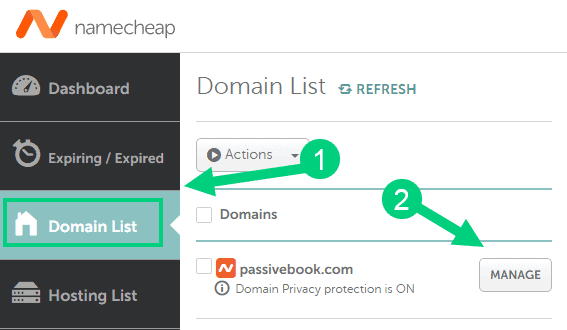
Step 7: Under the Nameservers section, select “Custom DNS” from the dropdown ❶. Then enter the following two nameservers ❷ ns1.bluehost.com and ns2.bluehost.com as shown in the image. Then click the green tick ❸ to save. If you use a hosting provider other than Bluehost, enter their nameserver values in this step instead.
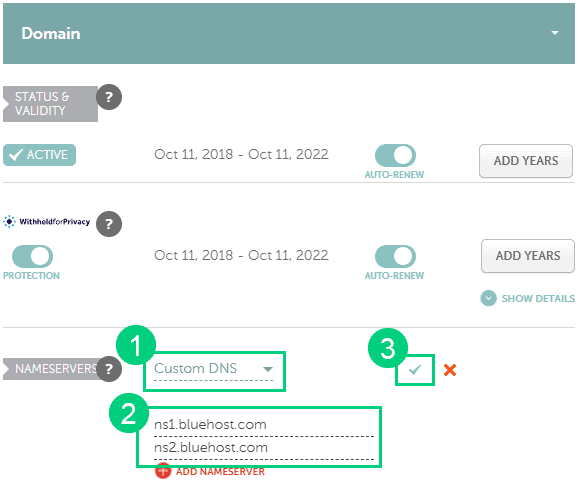
Can I get a free domain name?
Your web hosting provider might give you a free domain name for one year but they charge $12 for domain privacy which is free in Namecheap. From the second year, you will pay for both the domain and privacy which will cost you more than $20+. So it is cheaper to just register your domain with Namecheap from the beginning. Also using different companies for web hosting and domain registration will allow you to easily switch your blog host later without transferring domains.
Can I change the name of my blog later?
You will lose your search engine rankings if you change your blog’s name once it gets links from other websites. It will take as long as a year or more for you to regain the lost traffic. It is possible to mitigate problems by having proper redirects. But you will have to renew both your old and new domains every year. So try to avoid changing your blog’s name once it is established.
4. Setup WordPress
The next step is to get your blog up and running in WordPress.
WordPress is a content management system (CMS) that makes it easy to create a marketing blog from scratch without learning how to code.
Why Choose WordPress.org?
Although there are many blogging platforms out there, we recommend WordPress.org for the following reasons:
- It is free to use although you need to get your own domain and hosting.
- It is open-source, which means that there are thousands of free themes and plugins available.
- It is easy to use and beginner-friendly.
- It is highly customizable. You can use it to create any type of website, not just a blog.
- It is used by some of the biggest brands in the world, including Facebook, Coca-Cola, Sony, and Forbes.
There are many blogging platforms but the self-hosted wordpress.org powers 70% of blogs on the internet. 42% of all websites on the internet use WordPress.

WordPress.org vs WordPress.com
There are two versions of WordPress. One is WordPress.com and the other one is WordPress.org.
You should always use WordPress.org for your marketing blog because it is self-hosted. This means you have complete control over your website and how you monetize it in the future.
WordPress.com is a good option if you want to create a personal blog or a small website. But it is not suitable for marketing blogs because you have to upgrade to their expensive paid plan to unlock all features that self-hosted WordPress.org provides. You cannot monetize your blog unless you upgrade to their paid plan.
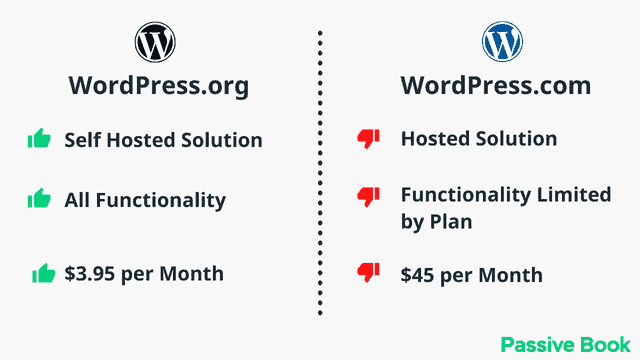
Why Avoid Free Blogging Platforms
There are many free blogging platforms out there such as Blogger, Wix, and Weebly. But we do not recommend using them for the following reasons:
- Search engines don’t rank blogs hosted on these platforms very highly. So you will struggle to grow your blog because you won’t get any traffic.
- There are very limited customization options.
- You cannot monetize your blog unless you upgrade to their premium plans, which can be quite expensive.
- Build your blog with the right foundation the first time by sticking to self-hosted WordPress.
- You don’t own your blog. The platform can shut down your blog anytime they want.

How much does it cost to start a marketing blog?
It will cost you $2.95 per month to host your WordPress marketing blog in Bluehost. A domain will cost you $12/year. So that is a total of $4.2 per month, which is less than the price of Netflix for all the unlimited features that a self-hosted WordPress blog has to offer.
What to do if you already have a free blog?
Migrating to WordPress is a very easy process, and can be done in a few minutes using one of the many WordPress import plugins available.
Install WordPress in Hosting
Before you can install WordPress and set up your marketing blog, you need to get your hosting set up. Hosting is a service that provides the server space to store the blog posts, files, and images of your marketing blog.
When someone visits your marketing blog in a browser like Chrome or Firefox, your web host will load files from their server into your visitor’s browser, allowing them to access your marketing blog.
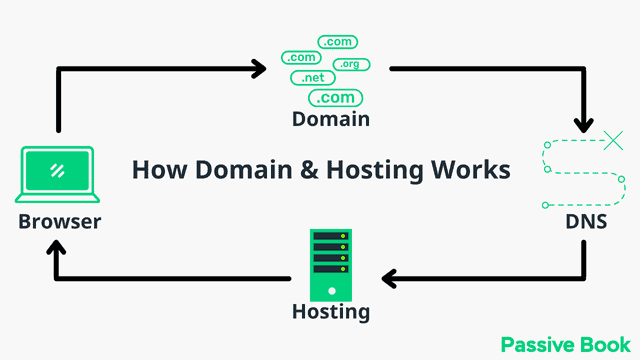
For this guide, we will use BlueHost as our web host. It is a cheap hosting that is extremely easy for beginners to set up. If you use any other web host, the steps will be the same but the user interface may be slightly different.
1. Go to BlueHost using this link to get a special discount. Select WordPress > WordPress Hosting from the top menu.
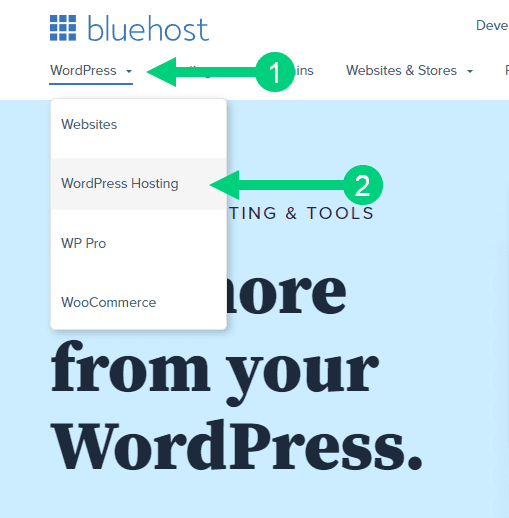
2. Click on the button you see on this page and you will be taken to the pricing section.
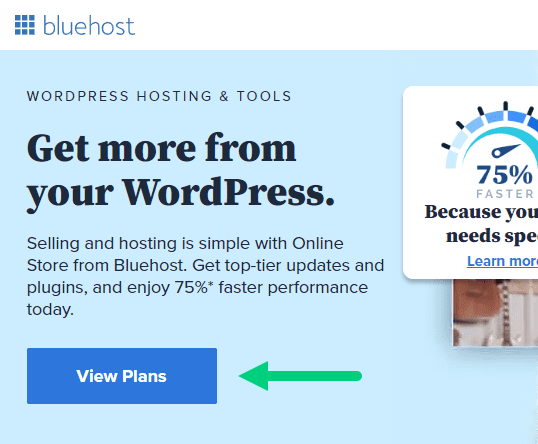
3. Select the Basic Plan. You can upgrade to a different hosting plan as you grow.

4. If you already have a domain name that you purchased with Namecheap you can put that in the “Use a domain you own” ❶ section. If you don’t have a domain name yet, choose the “Create a New Domain” ❷ to purchase a new domain.
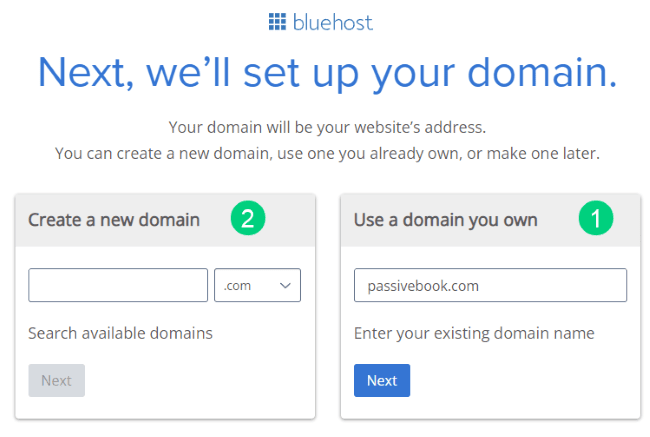
5. In the next screen, enter your information. Uncheck all package extras. If you purchase your domain through Bluehost instead of Namecheap, you may want to enable Domain Privacy. You won’t see the Domain Privacy option if you bought your domain through Namecheap. Namecheap will give you this Domain Privacy for free.
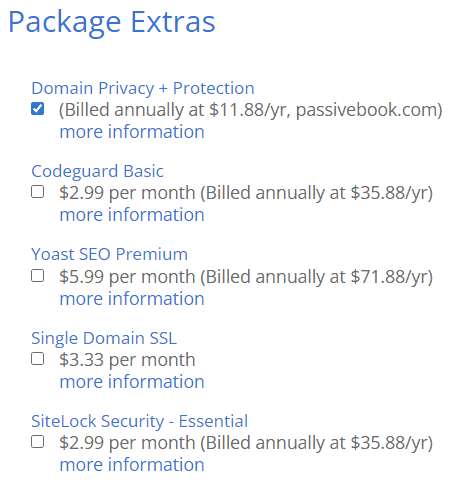
6. Once you have successfully paid, you will be prompted to set a password. Click on the “Create your Password” button.
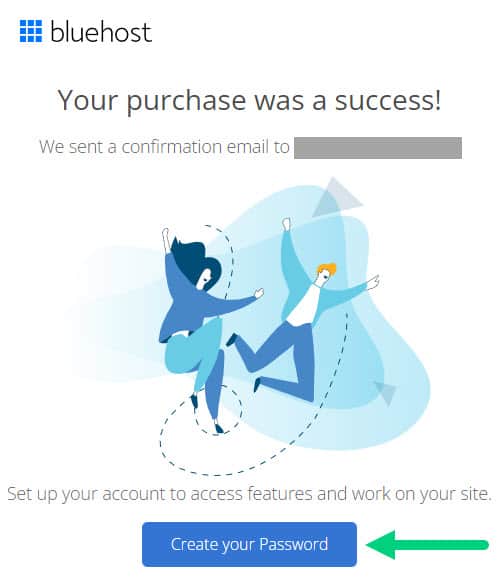
7. Enter your password and create your account. If you lose this password, you can reset it.
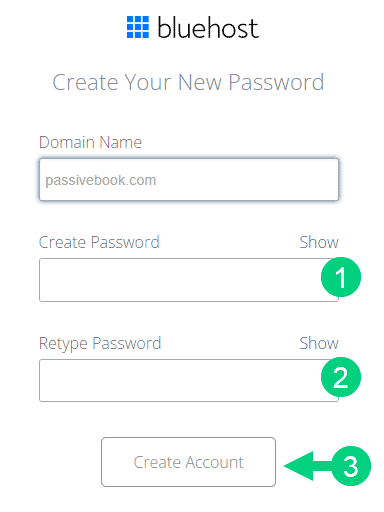
8. After you set your password, log in to Bluehost.
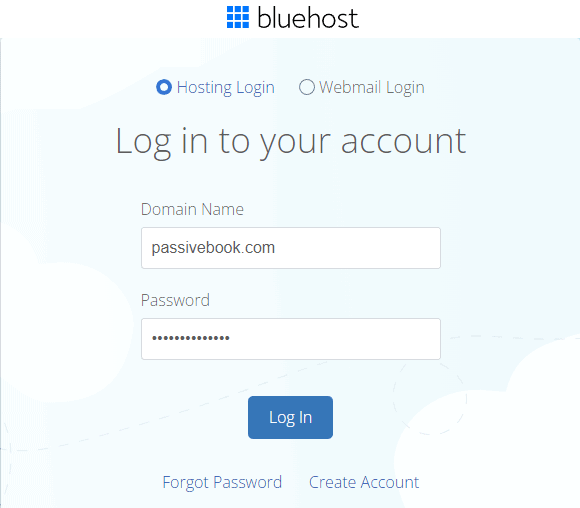
9. Click on the Create your website button on the following screen. This will start a Bluehost Wizard, just click Skip this step wherever possible.

10. On the following page, click “No help needed” or “Skip this step”. We don’t want Bluehost to limit our customization options.
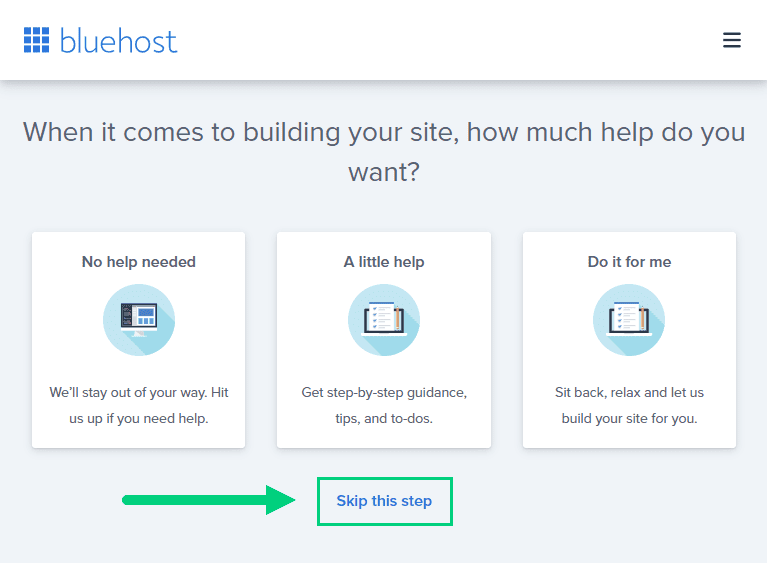
11. On the next page, you will be asked about the purpose of your website. You can choose from any of the available options.
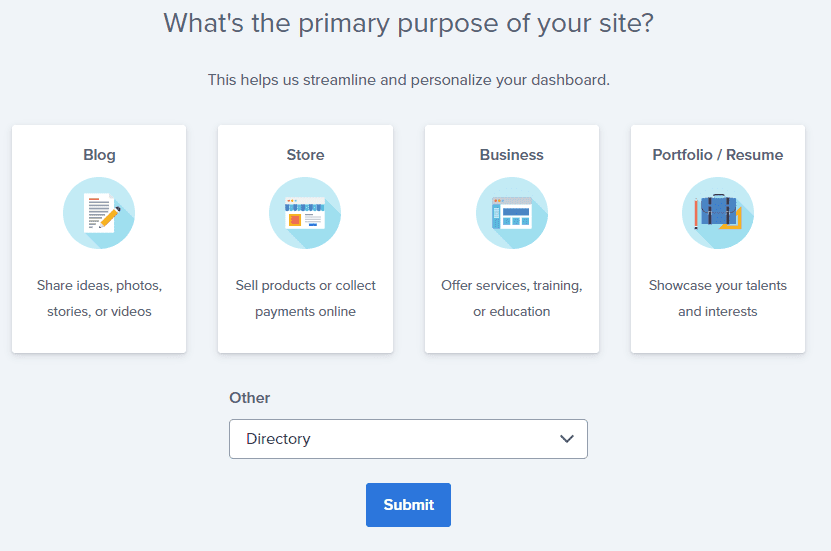
12. On the next page, click Skip this step.
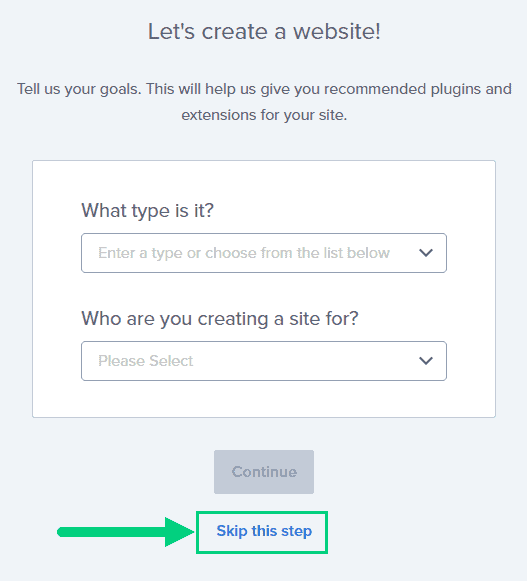
13. On the following page, enter the blog’s name and tagline. You can change this later so feel free to click “Skip this step” or enter something as a placeholder and click Continue.
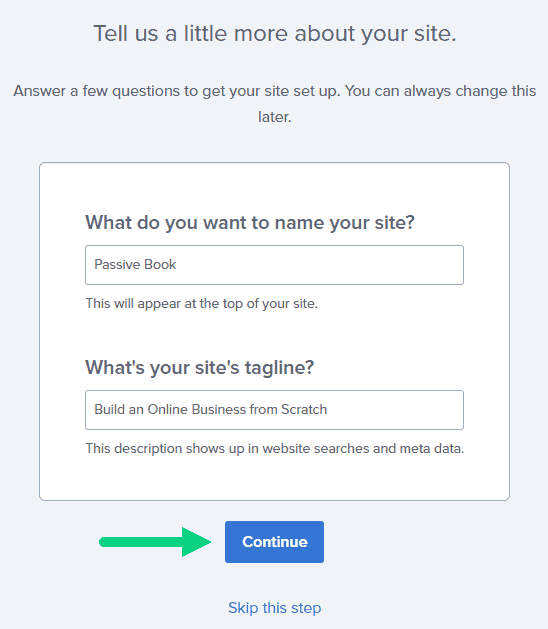
14. Finally you will be asked how you want to build your website. Choose “Limitless customization” to have all the options.

15. You can see your blog by going to yourdomain.com. Go to the Bluehost dashboard and click on the My Sites tab ❶ in the left sidebar and click on the “Manage site” button ❷.
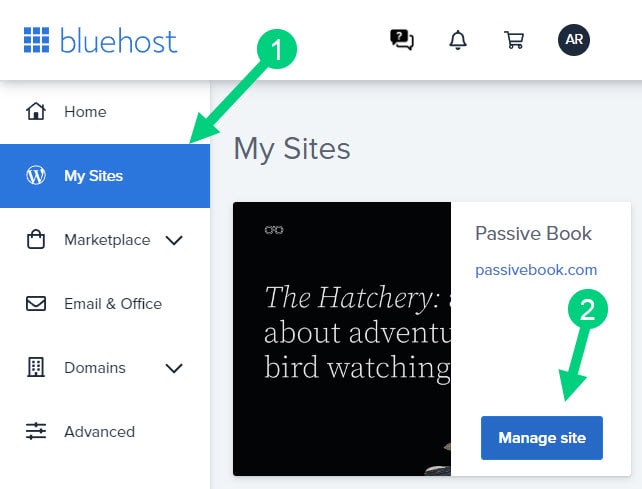
16. Your WordPress site has separate login credentials different from the ones you use to log into Bluehost. You can use this to log in to the WordPress dashboard directly without logging into Bluehost. To get this:
❶ Click on Users on top.
❷ You will be able to see your username and email that you can use to log in to WordPress.
❸ If you click on the three dots you will see the option to Reset your password. ❹
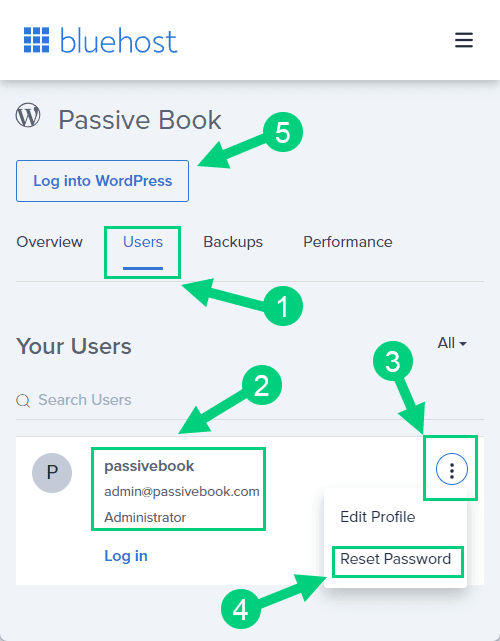
You can log into WordPress from the Bluehost dashboard by clicking the Log in to WordPress button ❺. But it is not recommended you rely on this as your primary login method because you will get locked out of your site if you ever change hosting providers.
17. You will be taken to the WordPress dashboard where you can reset your password ❶. If you don’t like the username Bluehost created for you, you can Add a New User ❷.

18. If you are adding a new user make sure you specify the user role as Administrator ❶. You can log in as the new user and safely delete the default user created by Bluehost.
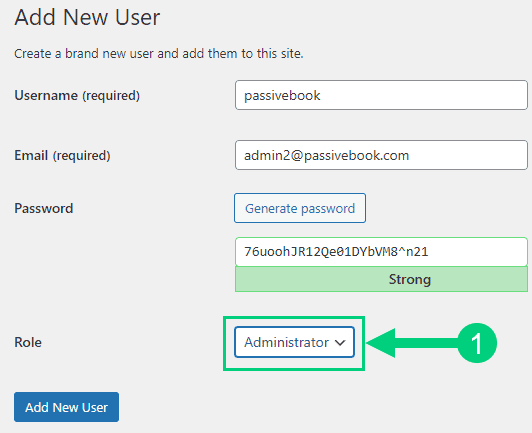
Congratulations! You have successfully set up WordPress.
Configure WordPress
Now that you have the basic version of WordPress installed, it is time to customize it to make it look and feel the way you want.
Login to WordPress Dashboard
The WordPress Dashboard is the central control panel for your marketing blog. This is where you will go to create new blog posts, add images, change the settings of your blog, etc.
Visit yourdomain.com/wp-admin to access the WordPress dashboard.
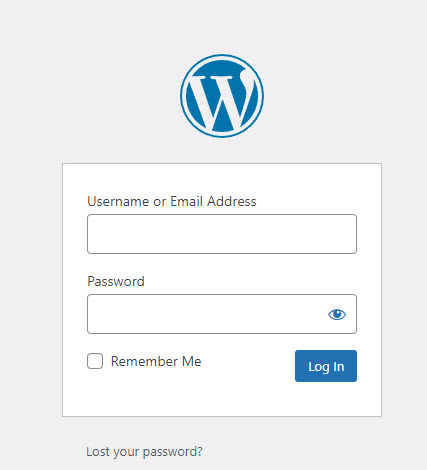
Use the Email and Password you provided during installation to log in to your WordPress dashboard. If you don’t have a password, use the “Lost your password?” to generate a new password.
Install WP Themes
A WordPress theme is a collection of files that create the design and layout of your marketing blog. It includes the CSS (style sheets), HTML (markup language), and PHP (scripting language) files that control how your blog looks.
There are many free WordPress themes available on the internet. But we recommend using a premium WordPress theme because they are well-coded, support all the features of WordPress, and are regularly updated by the developers.
Your new WordPress blog will be installed with a default blog theme that doesn’t look very great.
To install a new WordPress Theme:
Go to Appearance > Themes > Add New in your WordPress dashboard.
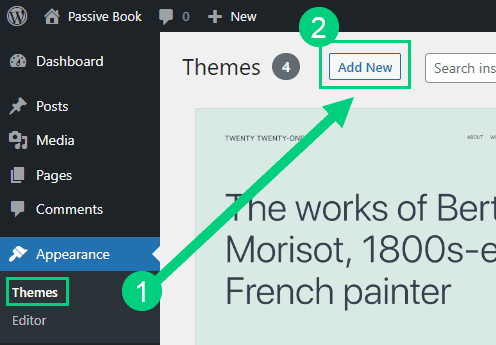
Use the search to find a theme that you like ❶. Before you install the theme, you can see a demo of the theme and learn about its features from the preview screen ❷. If you like the theme, you can install it by clicking the install button ❸. You can also upload a theme from a file on your computer ❹.
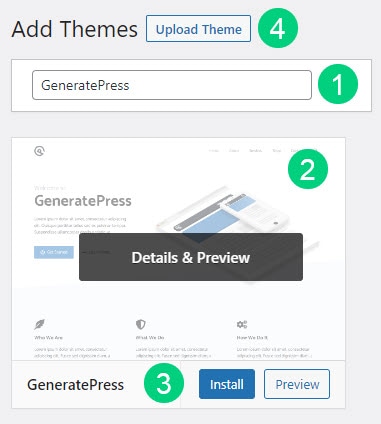
Once installed, click the Activate button to enable the theme.
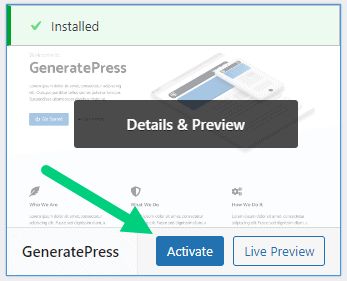
Although you can use a free theme (there are thousands of free themes available), we recommend using a premium theme.
Premium themes not only reduce your website’s load time but also help you customize your website to your heart’s desire.
Here are the premium themes we recommend:
There are also several custom-made marketing blog themes. These themes tend to be bloated with poor code which will slow down the performance of your website. We suggest getting one of our recommended themes for a fast website with unlimited customization possibilities.
Install WP Plugins
A WordPress plugin is a piece of software that can be added to a WordPress website to extend functionality or add new features. For example, an SEO plugin allows you to optimize your marketing blog posts for better search engine visibility.
There are thousands of plugins available for free.
Too many wordpress plugins can slow down your blog site. So before you install new plugins, it will be worth clearing out any existing plugins that your hosting provider installed by default.
Plugins first need to be deactivated before they can be deleted.
❶ Go to WP Admin > Plugins > Installed Plugins
❷ Click on the checkbox to select all plugins.
❸ Select Deactivate from the drop-down.
❹ Click Apply.
❺ Repeat the above steps but select “Delete” instead of “Deactivate” from the dropdown in ❸ to delete all the deactivated plugins.
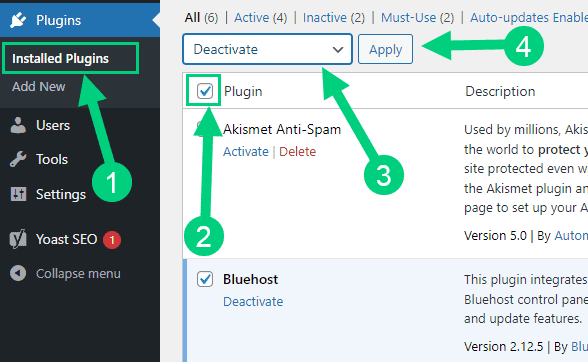
To install new plugins go to the WP Admin > Plugins > Add New.
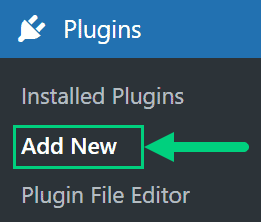
On the plugins page:
❶ Search for the plugin you want in the search bar
❷ Click Install Now. Once you install the plugin, you must also activate the plugin for it to be enabled.
❸ If you are installing a paid plugin you can upload the plugin instead.
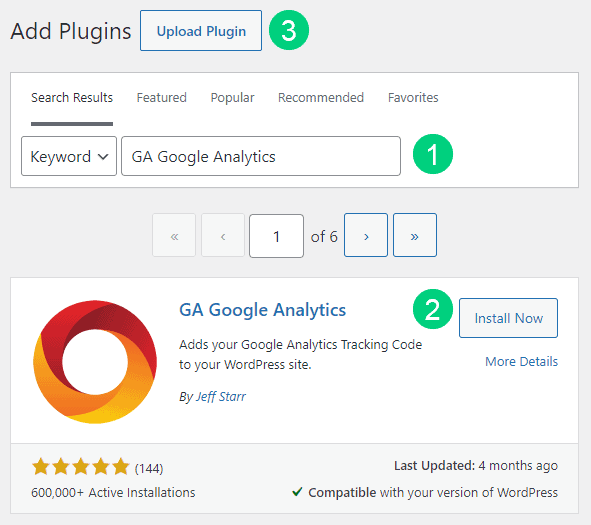
There are many different marketing blog plugins that you can install, but here are the ones which we recommend:
Backup Plugin: A backup plugin helps you create a copy of your marketing blog so that you can restore it if something goes wrong.
Recommended Plugin: WPVivid (paid) or UpdraftPlus (free).
SEO Plugin: A WordPress SEO plugin helps you to optimize your marketing blog posts for better search engine visibility. It also allows you to submit your website to Google and Bing for indexing.
Recommended Plugin: RankMath Pro (paid).
Google Analytics Plugin: A WordPress Google Analytics plugin helps you to collect data about your marketing blog traffic and activity. This data is then sent to your Google Analytics account where you can view reports and analytics about your marketing blog.
The data collected by Google Analytics can be used to improve your marketing blog traffic and activity.
Recommended Plugin: RankMath Pro (paid) or GA Google Analytics (free).
Cache Plugin: A WordPress cache plugin stores a copy of your marketing blog pages and posts as static files. These static files are then served to your visitors instead of loading the entire page from the WordPress database each time.
This speeds up your marketing blog because loading static files is much faster than loading dynamic content from a database.
Recommended Plugin: WP Rocket (paid).
Page Builder Plugin: A WordPress page builder plugin is a tool that allows you to create custom pages and posts layout without having to write any code.
Page builders are often used by marketing bloggers to create custom blog post layouts, landing pages, and squeeze pages.
Recommended Plugin: Thrive Architect (paid).
Security Plugin: A WordPress security plugin is a plugin that helps to secure your marketing blog from hackers and malware.
It does this by adding security features to your marketing blog such as password protection, two-factor authentication, and malware scanning.
Recommended Plugin: Wordfence (free).
Social Media Plugin: A WordPress social share plugin is a plugin that allows your visitors to share your marketing blog content on their social media channels.
Recommended Plugin: Easy Social Share Buttons (paid).
Email List & Lead Generation Plugin: An email opt-in form plugin is a WordPress plugin that allows you to create email opt-in forms. These forms allow your visitors to subscribe to your marketing blog email list.
Email opt-in forms are an important part of any marketing blogger’s toolkit because they help you to grow your email list.
Recommended Plugin: Thrive Leads (paid).
Customize WordPress
Once you have installed your theme and plugins, it is time to customize the wordpress blog platform:
Change Colors, Fonts & Spacing
You can set the font, colors, and spacing by going to Appearance > Customize in your WordPress dashboard. Premium themes like GeneratePress allow you to customize every aspect of your blog.

Check out our Blog Fonts & Typography guide to choose the right font and typography settings for your blog.
Add Your Logo
Get a logo designed for your blog from Fiverr. Then set the logo of your blog by going to Appearance > Customize in your WordPress dashboard. A logo is not required for a successful blog but it can definitely help appeal to your target audience.
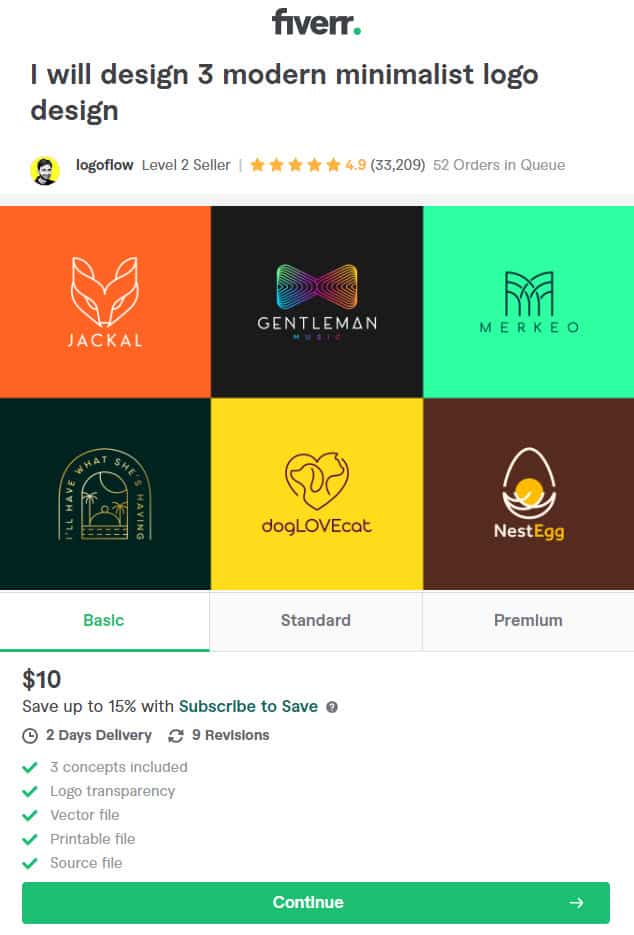
Change Favicon
Favicon is the image that appears in the browser tab and bookmarks. Set the Favicon from the Appearance > Customize section of the WordPress dashboard.

Create Menus
The header and the footer menu can be set from the Appearance > Menus in your WordPress blog dashboard.
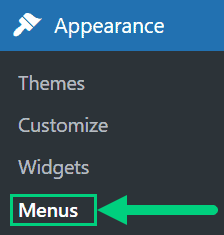
You can nest menu items so that it appears as a dropdown menu ❶. You can use the menu as your primary or secondary navigation menu ❷. Don’t forget to save your menu ❸.
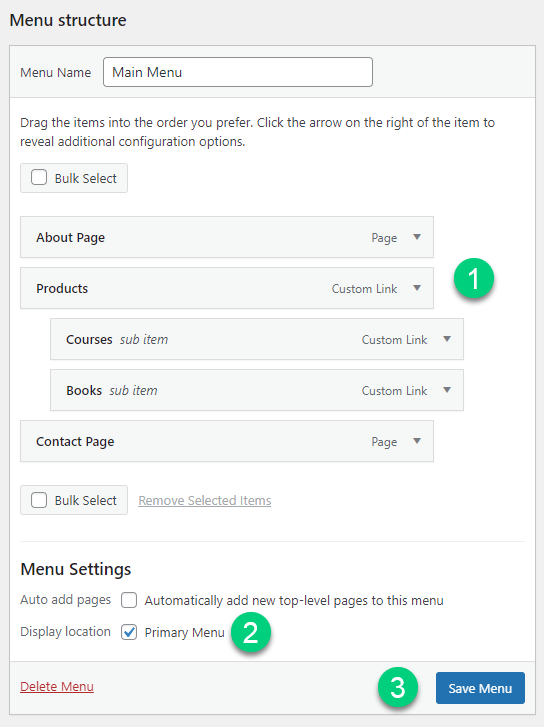
Create Widgets
If you have a sidebar, you can add widgets to it. Go to Appearance > Widgets in your WordPress admin dashboard.
Check out the list of the most useful Blog Widgets and how to add them to your blog.

Set Title & Tag Line
The next step is to change your General Settings. Go to Settings > General in the WordPress Admin area.
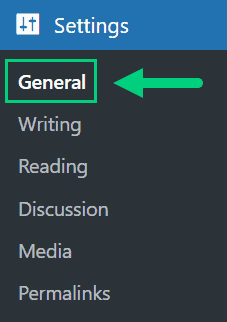
You can set your Site Title, Tagline, and Time Zone from this screen.
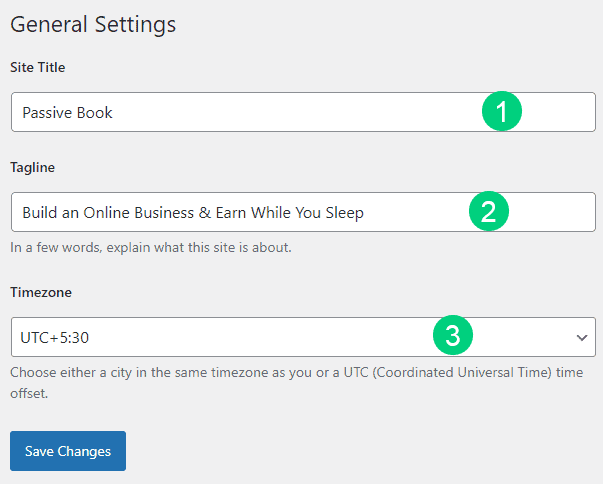
Set Permalinks
The ideal URL structure for SEO is yourdomain.com/sample-post. Set your permalink structure by going to Settings > Permalinks in your WordPress blog dashboard.

Select the “Post name” radio button and save changes.
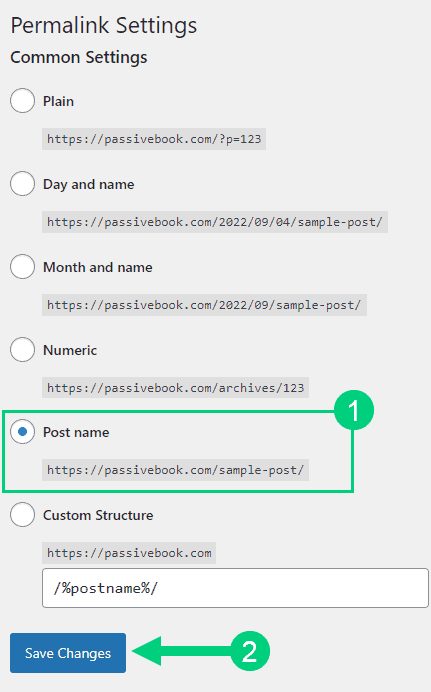
Enable Search Visibility
Chances are you want your blog to show up on Google so people can find you. Go to Settings > Reading in your WordPress dashboard.
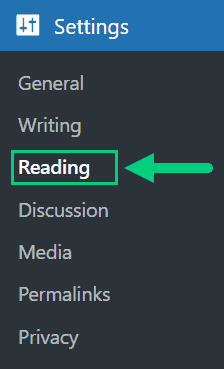
To get search engine traffic, ensure the checkbox “Disable search engines from indexing this site” is Unchecked. You can find this option in Settings > Reading. Most of the time this should be unchecked by default but if it is not, then uncheck it to ensure your site gets traffic from search engines.
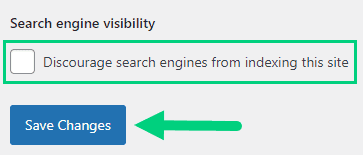
Adjust Comment Settings
Next, you will want to change the Discussion Setting (aka Comments). Go to Settings > Discussion in your WordPress admin area.
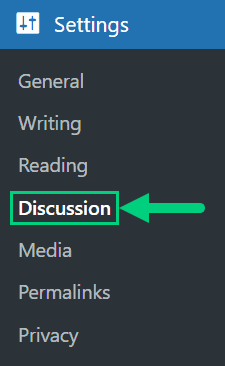
❶ You may want to enable or disable comments on this page. You can also disable pingbacks and enable comment moderation.
❷ You can also set comment approval settings.
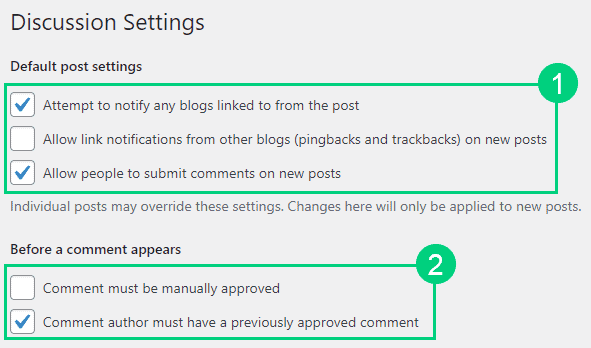
If you want to design your blog further, check out our dedicated guide on blog design which has all our best blog design recommendations.
Create Static Pages
There are a few essential pages that you need to create for your marketing blog before you can start blogging.
Use pages in WordPress to add static content. Go to WP Dashboard > Pages > Add New.
- Write the headline of your content.
- Populate the body content
- Click the publish button.
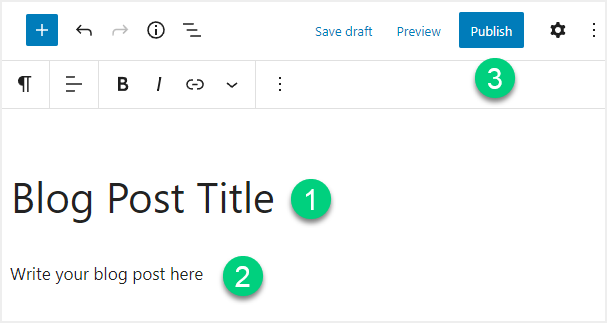
You may want to create the following pages:
Home Page
A home page is the main page of your marketing blog. It is usually the first page that your visitors see when they visit your blog.
The home page usually contains a welcome message, and a list of your most popular blog posts.
You can create a professional home page for your marketing blog using a page builder like Thrive Architect.
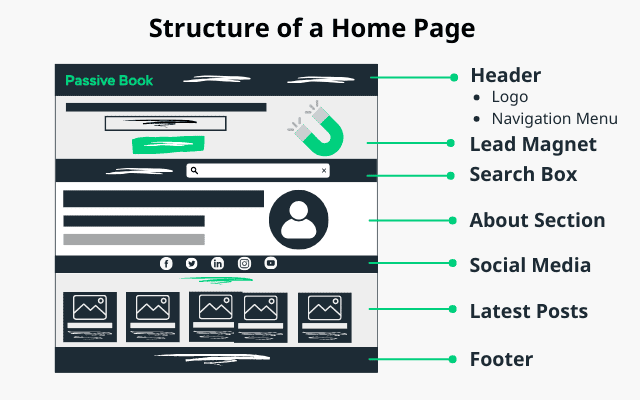
About Page
An about page is a page that tells your visitors who you are and what your marketing blog is all about.
The About page should contain information about you, your mission, and your vision. It should also contain a call to action (CTA) telling your visitors what you want them to do next.
The About page is one of the most important pages on your marketing blog because it helps you to build trust with your visitors.
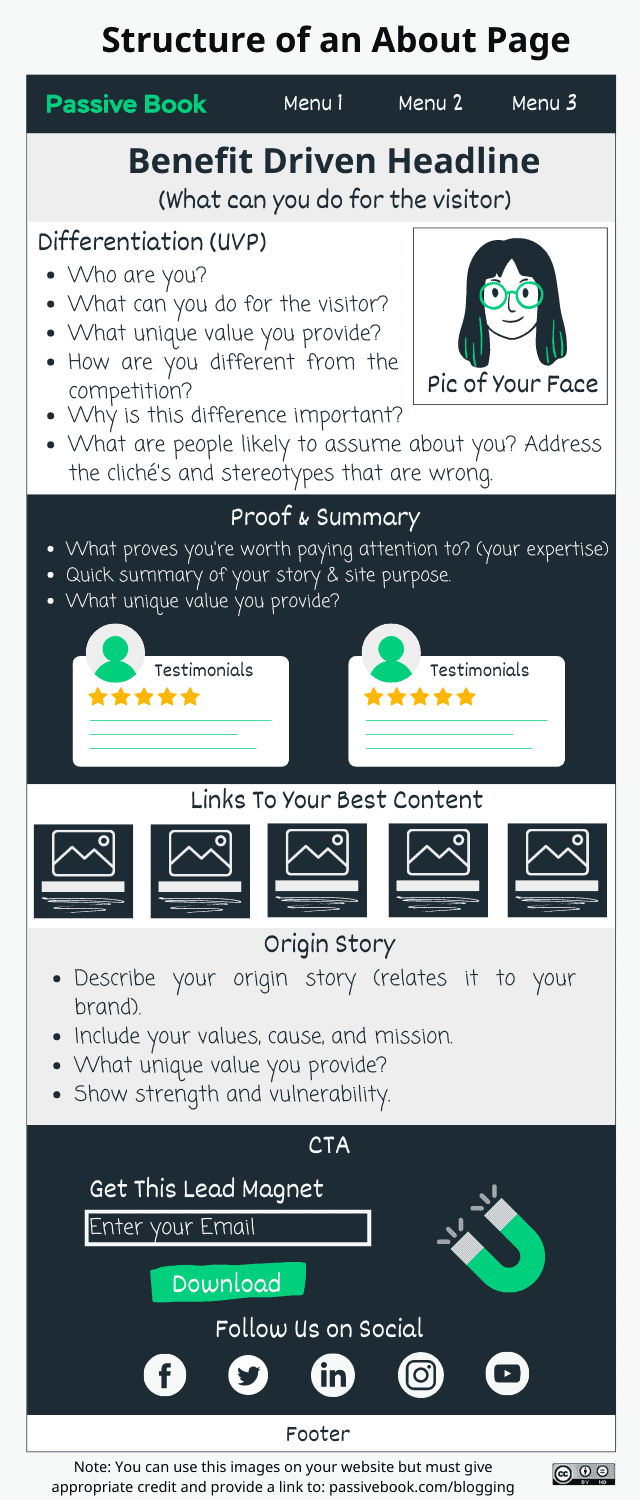
Contact Page
A contact page is a page that allows your visitors to contact you.
The contact page should contain your email address, social media links, and a contact form.
The contact page is important because it allows your visitors to get in touch with you if they have any questions or comments.
Use contact form plugins like Fluent Forms to create the form on your contact page.
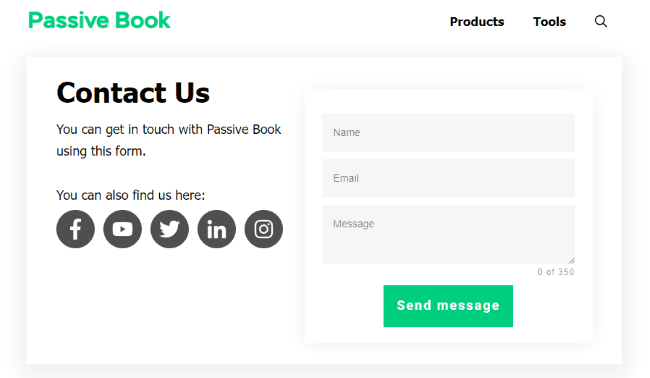
Privacy Policy
A privacy policy page is a page that tells your visitors how you collect, use, and protect their personal data.
The privacy policy page is required by law if you collect any personal data from your visitors. This includes data such as names, email addresses, and IP addresses.
WordPress generates its own privacy policy for you. But you can also use a tool like Termly to generate your own privacy policy.
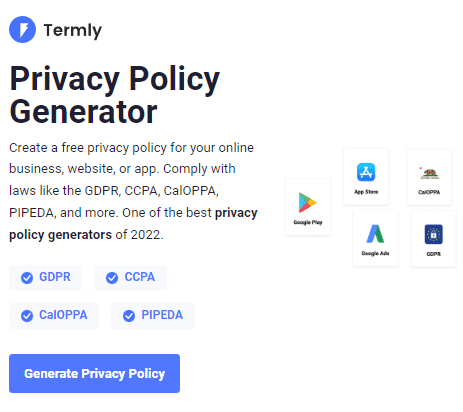
Terms of Service
A terms of service page is a page that tells your visitors what they can and cannot do on your marketing blog.
The terms of service page is important because it sets the expectations for your visitors and helps to protect you from legal liability.
Use a terms & conditions generator like Termly to create it.
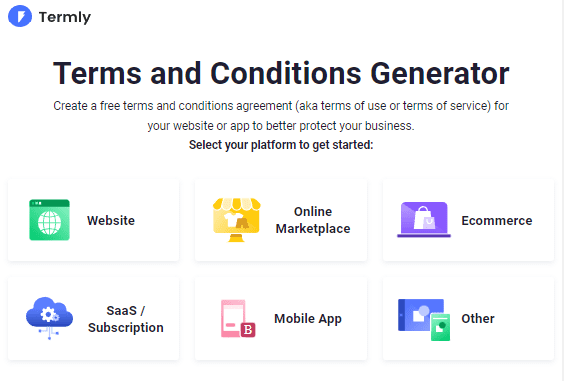
5. Write & Publish Blog Posts
Now that you have your marketing blog set up, it’s time to write and publish your first blog post. To craft the perfect blog post, check out our in-depth guide on How to Write A Blog Post. Here we will go over specific tips for a marketing blog.
1. Brainstorm Topics
You should brainstorm 100 topic ideas for your marketing blog. This will ensure that you always have content to write about in your marketing blog.
The goal is to find topics for your marketing blog that your audience is searching for on Google. The type of content you write on your marketing blog will depend on your specific niche.
Here are a few marketing blog post ideas, you can potentially cover in your marketing blog:
- How To Guide
- List Posts
- Product Reviews
- Case Studies
- Expert Interviews
There are a few ways to brainstorm specific content:
Look at Competitors
If you want to be a successful blogger, you need to be constantly brainstorming new content ideas. One great way to get started is to look at the articles your competitors are writing about.
By looking at the topics your competitors are writing about, you can get a sense of what topics are popular in your niche and come up with content ideas that are different and more interesting.
You can also use your competitor’s articles as a source of inspiration for blog post titles.
You can find who the top competitors are in your niche by googling your keyword and looking at the top competitors.
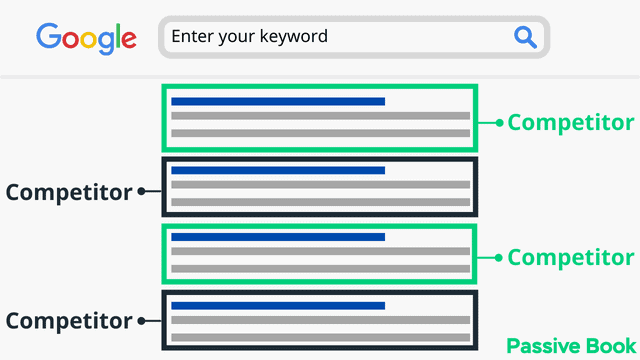
Do Keyword Research
One great way to come up with content ideas for your marketing blog is to do keyword research. This involves finding keywords that your audience is searching for in Google.
You can use a tool like KeywordTool.io to find keywords that are relevant to your niche. This tool will help you to find keywords that you may not have thought of before.

Once you have a list of keywords, you can start brainstorming content ideas that are relevant to those keywords.
Community & Forums
Another great way to come up with content ideas for your marketing blog is to participate in relevant online communities and forums.
This will help you to get a better understanding of the problems and questions that people in your niche are facing. You can then use this information to come up with content ideas that are relevant and helpful.
To find relevant online communities and forums, you can do a Google search for your keyword + “forum”.
2. Create an Editorial Calendar
Once you have a list of content ideas, it’s time to start creating an editorial calendar.
An editorial calendar is a tool that will help you to plan and organize your content.
This is important because it will help you to stay on track and make sure that you are consistently publishing high-quality content.
Download Content Calendar Template

Steal our exclusive content calendar template. Have it delivered directly to your inbox:
An editorial calendar should include the following:
- Publication date
- Title
- Author
- Topic
- A brief summary of the content
- Keyword
There are a few different ways to create an editorial calendar:
3. Write a Blog Post
Now it’s time to start writing your blog post. Just pick a topic from your editorial calendar and start writing.
How-To Articles
One of the most popular types of content in marketing blogs is how-to articles.
How-to articles are step-by-step guides that show the reader how to do something.
Here are a few examples:
- “Step by Step Guide to Setting up a Facebook Ad Campaign”
- “The Ultimate Guide to Writing a Killer Sales Email”
- “Creating a Marketing Plan on a Tight Budget”
- “How to Use Instagram Stories for Business”
- “Maximizing LinkedIn for B2B Lead Generation”
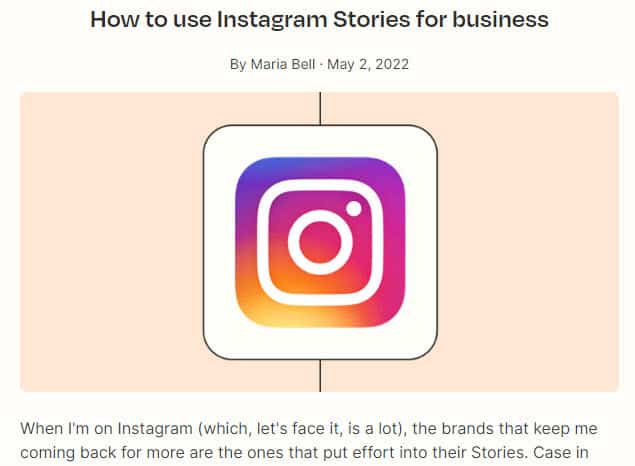
They are popular because they are very helpful and can be easily understood.
When writing how-to articles, it’s important to be clear and concise. You want to make sure that your reader can easily follow the steps that you are outlining.
It’s also important to use images, headings, and lists to break up your content and make it easy to read.
List Posts
Another popular type of content in marketing blogs is list posts.
List posts are articles that are structured around a list of items.
Here are a few examples:
- “The Top 10 Email Marketing Automation Platforms”
- “5 Must-Have Tools for Social Media Management”
- “The 7 Best Books on Digital Marketing”
- “The Top 20 Influencers in the Digital Marketing Space”
- “The 10 Best Marketing Conferences to Attend in 2020”
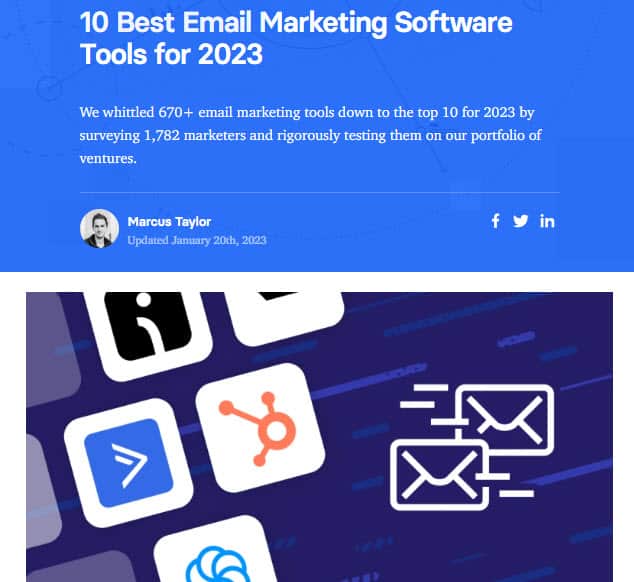
They are popular because they are easy to read and provide the reader with a lot of information in a short amount of time.
When writing list posts, it’s important to use numbers in your headlines. This will help to make your article stand out and make it more clickable.
Write a short paragraph for each list item and use images, headings, and lists to break up your content and make it easy to read.
Product Reviews
Product reviews are articles that provide the reader with information about a product.
Here are a few examples:
- “My Review of the Latest Marketing Automation Software”
- “Why I love using Hootsuite for Social Media Management”
- “The best email marketing services for Small Businesses”
- “My experience using SEMrush for SEO and PPC”
- “The Pros and Cons of using Hubspot for Inbound Marketing”

They are typically written by people who have used the product and can provide an honest and unbiased opinion.
When writing product reviews, it’s important, to be honest and transparent. You want to make sure that you are providing the reader with accurate information about the product.
Write 5x Faster With AI
You can write your new blog post at 5x speed using the AI writing software Jasper. I was able to write over a hundred blog articles in 3 months using Jasper. This blog article you are reading right now was written with the help of Jasper. AI will not only help you write blog posts fast but also with higher quality.
Jasper can write plagiarism-free blog content, articles, social media content, emails, and ad copy. All you have to do is provide a few inputs on what you want and Jasper will do all the hard work of creating the blog content for you. No more writer’s block.
Check out the video below to see Jasper in action:
Try Jasper for free using the links on this page and get 10,000 bonus credits you can use to start writing your first articles.
Once you sign up for Jasper I recommend you spend some time going through the tutorial videos in the Jasper Bootcamp to truly unlock the power of this amazing software.
Check out our guide on How to Write a Blog Post Fast in 15 mins Without Losing Quality for more tips to write fast.
Outsource Writing
If you don’t have the time or resources to write all of the content for your marketing blog, you can always outsource writing to a freelance writer.
There are several platforms that you can use to find freelance writers, such as:

When outsourcing writing, it’s important to provide the writer with clear instructions. You want to make sure that they understand what you are looking for and that they can write in your tone of voice.
It’s also important to set a budget for how much you are willing to spend on each article. Writers usually charge by the word or by the hour.
4. Add Images
Images are an important part of any blog post. They help to break up the content and make it more visually appealing.
When adding images to your blog post, you want to make sure that they are relevant and add value to the article.
You also want to make sure that you have the right to use the image. You can do this by either taking your own photos or using free stock photos.
There are many websites that you can use to find free stock photos, such as:
Free Options: Pixabay, Pexels, Upsplash
Paid Options: Deposit Photos, Shutterstock, iStock, Getty Images, 123rf.
The best images are the ones you take yourself with your smartphone camera. Use stock images when you can’t or don’t want to take your own images.
Canva is a free online design platform that you can use to create visuals for your blog content.
It’s a very user-friendly platform and it’s easy to create professional-looking visuals with it.
You can also use Canva to create visuals for your social media posts.
If you upgrade to Canva Pro, you will get access to a huge library of stock images along with their pro tools.

When adding images to your blog post, you want to make sure that they are compressed and the file format is correct. Use a plugin like Short Pixel to do this. Use jpeg for photos and png for graphics for the best performance.
You also want to make sure that you use keywords in the file name and alt text. This will help to improve your SEO.
6. Promote Your Marketing Blog
Once you have published your blog posts it is time to drive blog traffic to it by promoting it.
Search Engine Optimization (SEO)
SEO is the process of optimizing your website for Google searches.
When you optimize your website, you are making it easier for Google to understand what your website is about and how it can be helpful for users.
This will help to improve your website’s ranking in the search results and make it more likely that people will find your website when they are searching for information.
Many factors go into SEO, and it can be a bit confusing to figure out where to start. You can master the more advanced SEO tactics by checking out our SEO Resources.
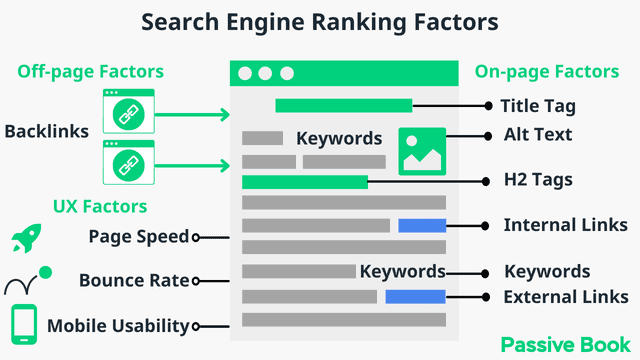
You can ensure you get the basics of SEO right, by completing the recommendations given by the RankMath plugin.
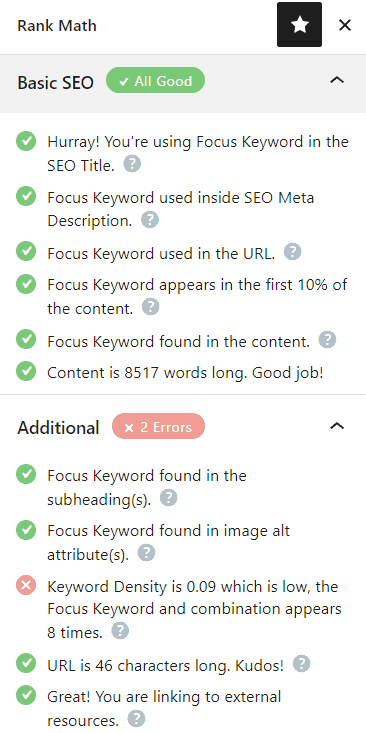
Email Marketing
Email marketing is a great way to promote your blog and build relationships with your readers.
When you have a list of email subscribers, you can send them updates about your latest blog posts, as well as other exclusive content.
This helps to keep your readers engaged and making them come back to your website for more. It also allows you to build trust with your readers and establish yourself as an authority in your niche.
The best way to grow your email list is to offer something of value in exchange for people’s email addresses. This is called a lead magnet.
Some examples of lead magnets include:
- eBooks
- Checklists
- Cheat sheets
- Templates
- Courses

The lead magnet should be relevant to your blog and that your target audience will find valuable.
You can then promote your lead magnet on your website and social media platforms.
When people sign up for your lead magnet, they will be added to your email list.
You can then start sending them regular updates about your latest blog posts and other exclusive content.
The best way to automate your email marketing is with an email marketing service. These services allow you to automatically email subscribers who join your list.
You can use the Thrive Leads plugin to build opt-in forms to collect email addresses. You can then connect the opt-in form to an email marketing service like Active Campaign to send out the emails.
Check out our Email Marketing resources to learn more.
Social Media Marketing
Social media marketing is a great way to promote your blog and build relationships with your readers.
When you use social media, you can share your latest blog posts with your followers and engage with them in conversation.
This helps to build trust and establish yourself as an authority in your niche.
The best way to get started with social media marketing is to choose one or two social media platforms that your target audience is using and focus on those.
You don’t need to be active on every single social media platform. It’s better to focus on a few and do them well than to try to spread yourself too thin.
Once you’ve chosen your platforms, it’s time to start creating content.
You want to make sure that you create high-quality content that is relevant to your target audience.
You also want to make sure that you are regularly sharing your latest blog posts on social media.
The best way to automate your social media marketing is with a social media scheduling tool. This allows you to schedule your content in advance and have it automatically published on your chosen social media platforms.
Guest blogging
Guest blogging is a great way to get exposure for your blog and attract new readers.
When you guest blog, you write a blog post for another website in your niche.
This helps to introduce you to a new audience and get your name out there.
It also helps to build relationships with other bloggers in your niche.
When you guest blog, you want to make sure that you write high-quality content that is relevant to the website’s audience.
You also want to make sure that you include a link back to your own website in your bio.

This will help to drive traffic back to your website and help you to build an audience.
To find guest blogging opportunities, you can search Google for “guest blog” + your niche.
You can also reach out to other bloggers in your niche and ask if they accept guest posts.
7. Monetize & Make Money
Once you’ve built up a loyal following, you can start to monetize your blog and make money from it. There are many ways that you can do this, including:
Advertising
One way to monetize your blog is through advertising. You can sell ad space on your website and get paid every time someone clicks on an ad or views it.
This is a great way to make money, but it can also be a bit intrusive for your readers.
If you do choose to use advertising, you want to make sure that you don’t have too many ads on your website. You also want to make sure that the ads are relevant to your target audience.
To start advertising on your blog, you can sign up for an ad network like Ezoic (they pay more than Google Adsense). When your blog starts getting more than 100,000 page views a month you can monetize with Adthrive.
| Ad Network | Earnings Per 1K Impressions (EPM) | Monthly Traffic Requirement |
|---|---|---|
| Ad Thrive | $13 | 100,000 |
| Ezoic | $3 | 10,000 |
| Media.net | $1 | – |
| Google Adsense | $1 | – |
Affiliate Marketing
Another way to monetize your blog is through affiliate marketing. This is where you promote other people’s products or services on your website and get paid a commission for every sale that you generate.
This is a great way to make money because you can promote products that are relevant to your target audience.
You have to place your affiliate link in your blog post. If someone clicks your affiliate link and makes a purchase, you will get a commission for the sale.
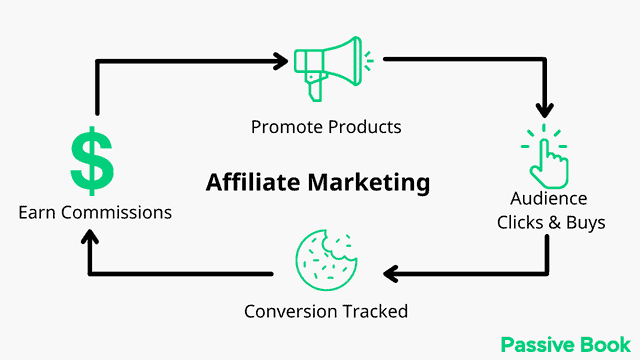
You can sign up to affiliate programs through companies like Amazon and Commission Junction.
Digital Products
Another way to make money from your blog is by selling digital products. These are products that you create yourself and sell online.
This could be an ebook, an online course, or a printable.
The great thing about digital products is that they are easy to create and you can make a lot of money from them.
To get started with selling digital products, you can create a PDF ebook and sell it on your website.
You can also create an online course and sell it through a platform like Udemy.
You can use Teachable if you want to sell video courses. Your students will have a dedicated course members area and a community system to ask questions and interact with each other. If you only want to sell eBooks, you can use SendOwl which lets you sell your digital products and eBooks for free.
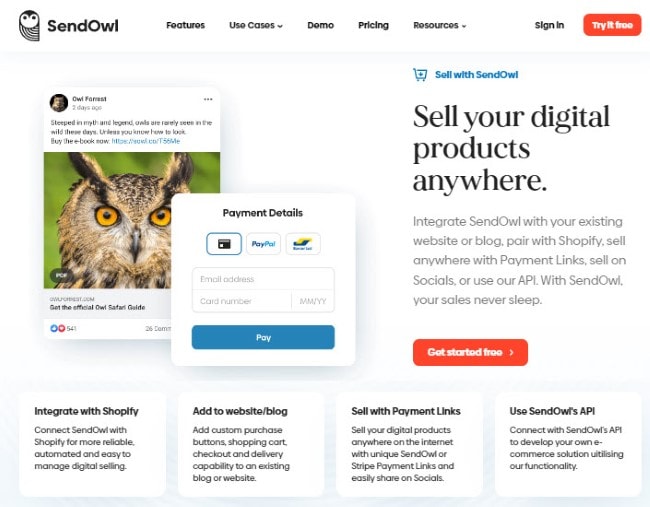
Sell Services
Another way to monetize your blog is by selling services.
This could be anything from consulting services to web design services.
If you have a skill that you can offer others, you can sell it on your blog.
To get started with selling services, you can create a service page on your website and list the services that you offer.
You can also reach out to companies and businesses in your niche and offer your services to them.
Physical Products
Another way to make money from your blog is by selling physical products.
This could be anything from t-shirts to mugs.
If you have a product that you can sell, you can sell it on your blog.
To get started with selling physical products, you can create a shop page on your website and list the products that you have for sale.
You can also reach out to companies and businesses in your niche and offer to sell their products on your blog.
FAQ
Here are a few frequently asked questions:
Is a blog good for marketing?
A blog is a great way to market your business or product. It allows you to reach a wide audience of potential customers and gives you a platform to share your message.
A blog can also help you to build trust with your audience and establish yourself as an expert in your field.
If you are looking to market your business or product, then starting a blog is a great way to do it.
What makes a blog successful?
You should have at least a hundred published posts for your blog to be successful. Successful bloggers post consistently till they reach their goal. You should also do proper keyword research so that your efforts don’t go in vain. The keywords you target with your article should have the potential to drive traffic to your blog.
What Next?
Most people think that starting a blog is as simple as creating a website and writing down their thoughts. But if you want to start a blog that will help you build your business and brand, there’s more to it than that.
We hope this guide showed you how to start a marketing blog that will help you reach your goals.
If you have any questions as you set up your new blog, leave a comment below so we can help you out.
Have you started your marketing blog yet? What type of marketing blog are you going to start?
Let us know in the comments.
Share this post with your friends & followers:
